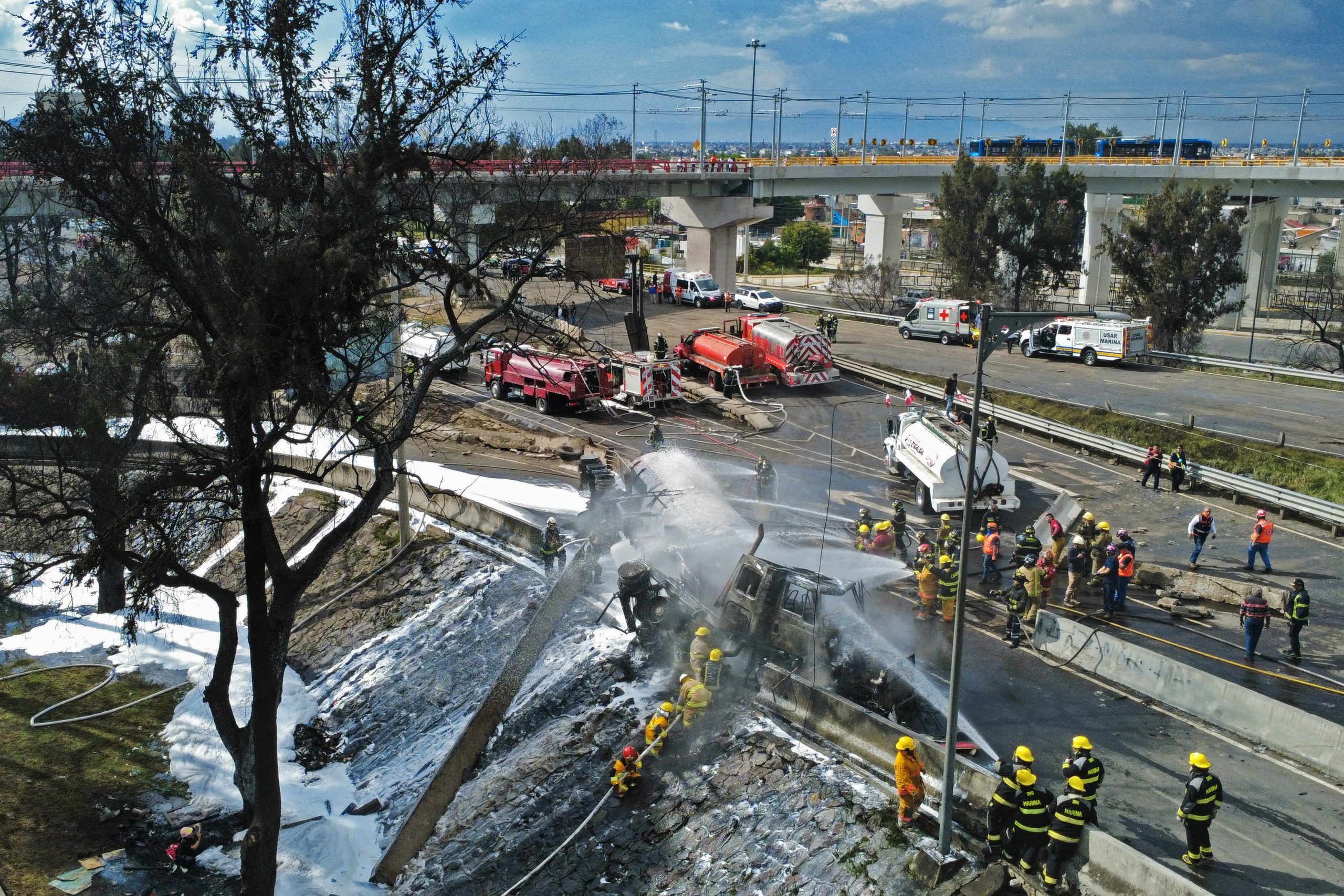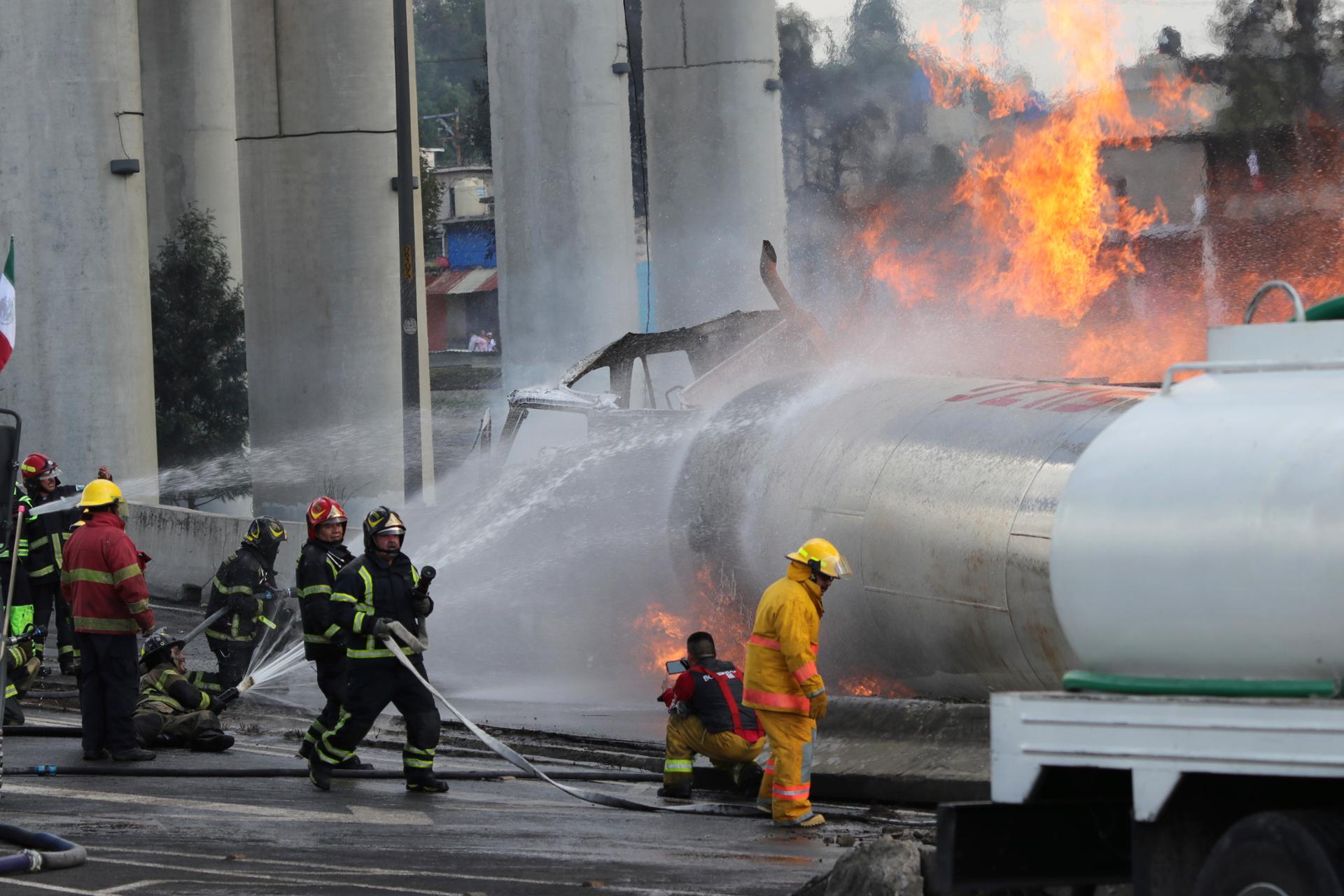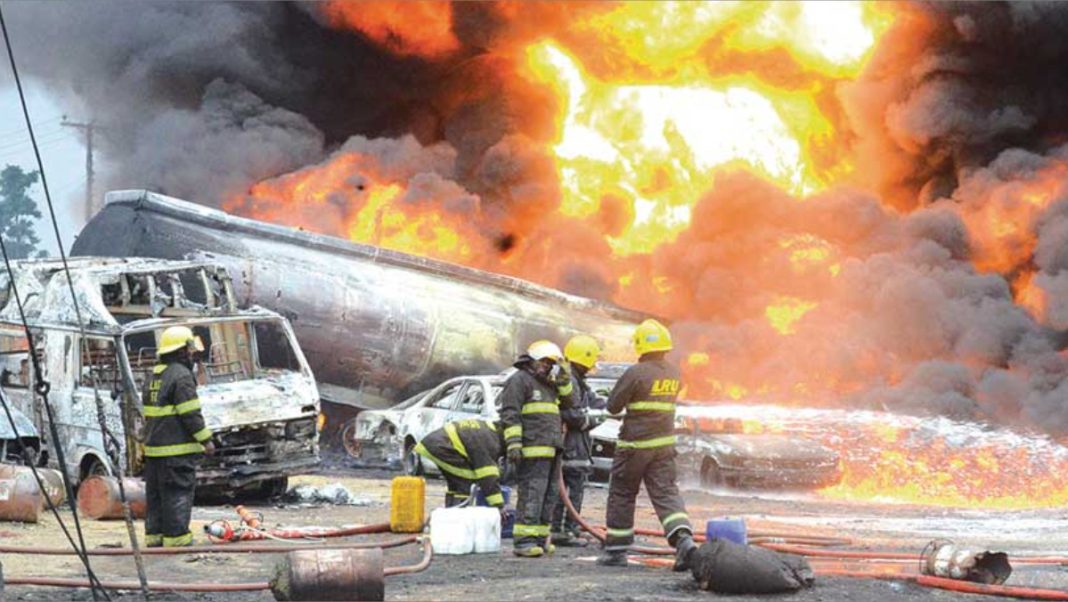Tragic Gas Tanker Explosion in Mexico City: A Comprehensive Investigation
The bustling metropolis of Mexico City found itself engulfed in an unimaginable tragedy on September 10, 2025, with a catastrophic gas tanker explosion that has left a profound impact on both its physical landscape and the emotional fabric of the community. This incident underscores the complexities of urban safety when hazardous materials are involved, raising alarming questions about existing safety regulations and the risks posed to densely populated areas. As the city struggles to recover, it must confront the need for systemic change to prevent such disasters from recurring.
Details of the Incident: A Closer Look
The tragedy unfolded during peak hours on the Iztapalapa–Chalco highway, a corridor notorious for its heavy traffic. Eyewitness accounts describe an ordinary day quickly turning chaotic as a gas tanker, transporting over 13,000 gallons of liquefied petroleum gas (LPG), lost control and overturned. Witnesses captured the shocking moment on their smartphones, where the tanker was seen skidding across the asphalt before erupting into flames, creating a fireball visible from several miles away. The intense heat and flames rapidly spread to nearby vehicles, igniting a horrifying scene of destruction.
The fire was so intense that it not only engulfed the tanker but also reached nearby cars and motorcycles, creating a domino effect of explosions. Reports indicate that debris from the explosion flew into the air, creating a rain of shrapnel that added to the chaos. The horrifying visuals shared on social media depicted not only the flames but also the thick plume of black smoke that engulfed the area, leaving witnesses and residents in shock. This incident serves as a grim reminder of how quickly traffic-related tragedies can escalate into large-scale disasters.

Casualties and Damage: The Human Cost
As emergency responders rushed to the scene, the scale of devastation became painfully clear. Authorities confirmed that at least three individuals perished in the explosion, while around 70 others were injured, many suffering from severe burns and trauma. The explosion devastated over 30 vehicles, leaving a tragic tableau of twisted metal and charred remains strewn across the highway. Eyewitnesses recounted the horror, describing how families fled their vehicles in panic, desperately seeking refuge from the encroaching flames.
Hospitals in the vicinity were overwhelmed with patients, and as the situation unfolded, several victims were reported to be in critical condition. The emotional toll on the community was palpable; families anxiously awaited news about their loved ones, while others mourned the tragic loss of life. This incident not only highlighted the immediate consequences of the explosion but also underscored the long-term emotional and psychological impact on those who witnessed the event. The community faces the daunting task of healing from this tragedy, as they navigate their grief and fear of future occurrences.
Investigation and Accountability: Seeking the Truth
In the aftermath of the explosion, city officials launched a comprehensive investigation to determine the factors that led to this catastrophic failure. Initial reports indicated potential negligence on the part of the gas tanker company, with suggestions that the vehicle may not have had the necessary insurance documentation required for transporting hazardous materials. Investigators are meticulously examining various aspects, including mechanical failure, excessive speed, and driver error, to identify contributing factors to the rollover.

Authorities have pledged to hold all responsible parties accountable, with the transportation ministry actively involved in reassessing current safety protocols concerning the transport of hazardous materials. This thorough investigation is crucial, as it aims to provide transparency and justice for the victims and their families. Additionally, it may serve as a catalyst for systemic change in regulations surrounding the transportation of dangerous materials, ensuring that similar incidents can be prevented in the future.
Community Reactions and Concerns: A Wake-Up Call
The gas tanker explosion has sent shockwaves through the local community, igniting discussions about the transport of dangerous materials in densely populated urban areas. Many residents reported feeling their homes shake from the force of the blast, a traumatic experience that has left a lasting impression on their sense of safety. In response to the outpouring of concern, city officials are contemplating significant changes to existing protocols for hazardous cargo transport.
Proposals to reroute hazardous materials away from residential neighborhoods are gaining traction, alongside discussions to enhance the frequency and thoroughness of inspections for commercial vehicles carrying flammable substances. Local leaders have been urged to prioritize public safety, and many community members are demanding transparency in the decision-making process to ensure that their voices are heard. This collective response underscores the resilience of the community as they seek to advocate for safer living conditions.

Lessons Learned and Recommendations for Future Safety: A Call to Action
The tragic gas tanker explosion serves as a critical wake-up call, highlighting the urgent need for improved safety regulations governing the transport of volatile materials. Key recommendations emerging from this incident include:
- Stricter Vehicle Inspections: Enhanced inspection protocols for tankers carrying hazardous materials should be enacted to ensure vehicles are fit for transport and meet safety standards.
- Mandatory Training Programs: Comprehensive driver training should be established, focusing on emergency procedures, safe driving practices, and handling of hazardous materials.
- Clear Routing Policies: Cities must implement clearer routing guidelines to steer hazardous cargo away from heavily populated areas whenever feasible, minimizing risks to residents.
- Rapid Emergency Response Plans: Local governments need to develop and regularly update emergency response plans to minimize casualties and ensure preparedness in the event of similar accidents.
Conclusion: A Call for Change
The devastating gas tanker explosion in Mexico City is not merely an isolated incident; it is a stark reminder of the inherent dangers associated with transporting flammable materials in urban environments. As investigations continue and the community grapples with the repercussions of this tragedy, it is evident that systemic changes are necessary to safeguard lives and prevent future catastrophes. Stricter regulations, enhanced community awareness, and robust emergency response mechanisms must be prioritized.
The city now stands at a pivotal moment, with an opportunity to learn from this tragedy and implement meaningful changes that could ultimately save lives. The community’s resilience and determination to advocate for their safety will be fundamental in driving the necessary reforms. This incident must serve as a catalyst for stronger regulations, enhanced safety measures, and better preparedness in the face of future challenges associated with hazardous material transport.
Sources:
- Reuters – Tanker truck explodes on Mexican highway, killing 3 and injuring 70
- AP News – Massive gas tanker explosion in Mexico City kills 3 people and injures 70 others
- El País – At least four dead and 90 injured in gas tanker explosion in Mexico City
- Mexico News Daily – Gas tanker explosion in Mexico City claims 8 lives, injures 90

















